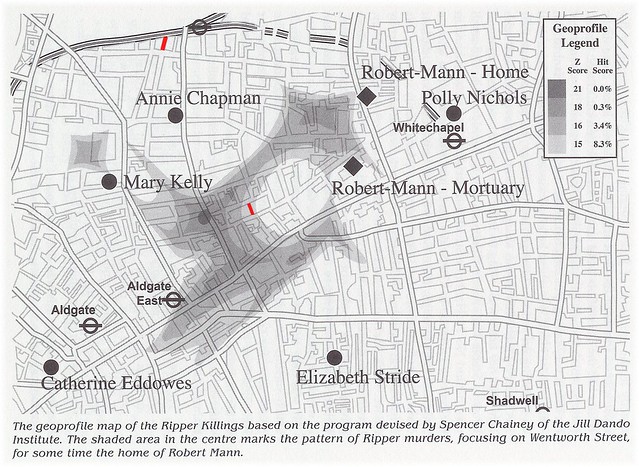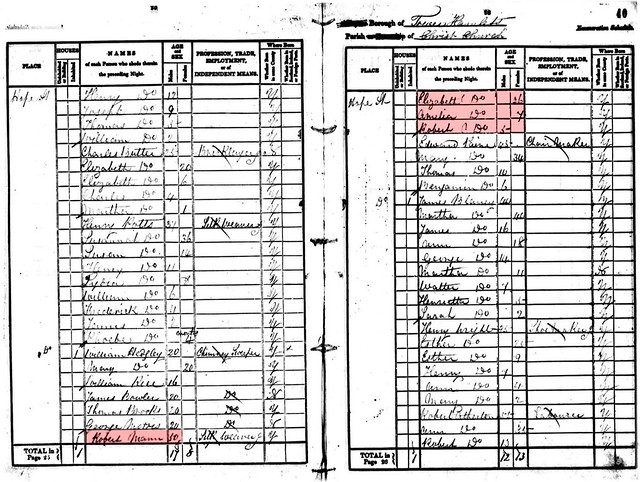Robert A. Snow, In Pursuit of Jack the Ripper: An Introduction to the Whitechapel Murders. Denver: Outskirts Press, 2011. ISBN 978-1-4327-6434-0
One of the difficulties I have with introducing friends or family members to the study of JtR is the length of the best books. When someone asks me about a good source on the subject, I show them Sugden or Begg and their jaws usually drop. "That looks like a bit more than I wanted to know" is their usual reaction.
It's hard to find a recent, short, accurate account of the WMs, but we might have one here. This one is set in a largish font, with lots of white space, and could be read by most people in a couple of sittings during a wet weekend. Another good thing is that it has no postmortem pictures (which often scare off the newbies) but it does have a helpful diagram of the wounds inflicted upon 8 victims.
Snow is a former Deputy Chief with the Suffolk County (New York) Police Department who served in a variety of posts, and he approaches the WMs as a cold case. His is a Joe Friday kind of book ("Just the facts, ma'am). No speculation, no theories, just the data culled from the inquests, newspapers, and some of the standard texts.
He concludes that the C5 fell victim to JtR, as well as Tabram, McKenzie, and Coles. He's quite adamant about including Tabram, as well as the fact that MJK's heart was actually found somewhere at the murder site. (This point is currently being discussed on the MJK "Heartless?" thread.)
There are a few errors, but not many: Joseph "Love" was living temporarily at the IWEC (typo, I assume); Polly Nichols was murdered on August 13 (simple transposition, I assume). And he must have consulted an older edition of the A-Z because he spells Eddowes' first name as Catharine. The rest of the errors are minor and should have been caught by a competent editor.
There is a fair amount of repetition of the facts, but I suspect that would be helpful to newbies. There is a good, clear statement of the difference between M.O. and signature, and a concise overview of geographic profiling. (Snow reckons that JtR lived in George Yard Buildings).
In short, what we have here is a brief, well-written tome with easily correctable errors. Just the sort of thing I've been looking for.
One of the difficulties I have with introducing friends or family members to the study of JtR is the length of the best books. When someone asks me about a good source on the subject, I show them Sugden or Begg and their jaws usually drop. "That looks like a bit more than I wanted to know" is their usual reaction.
It's hard to find a recent, short, accurate account of the WMs, but we might have one here. This one is set in a largish font, with lots of white space, and could be read by most people in a couple of sittings during a wet weekend. Another good thing is that it has no postmortem pictures (which often scare off the newbies) but it does have a helpful diagram of the wounds inflicted upon 8 victims.
Snow is a former Deputy Chief with the Suffolk County (New York) Police Department who served in a variety of posts, and he approaches the WMs as a cold case. His is a Joe Friday kind of book ("Just the facts, ma'am). No speculation, no theories, just the data culled from the inquests, newspapers, and some of the standard texts.
He concludes that the C5 fell victim to JtR, as well as Tabram, McKenzie, and Coles. He's quite adamant about including Tabram, as well as the fact that MJK's heart was actually found somewhere at the murder site. (This point is currently being discussed on the MJK "Heartless?" thread.)
There are a few errors, but not many: Joseph "Love" was living temporarily at the IWEC (typo, I assume); Polly Nichols was murdered on August 13 (simple transposition, I assume). And he must have consulted an older edition of the A-Z because he spells Eddowes' first name as Catharine. The rest of the errors are minor and should have been caught by a competent editor.
There is a fair amount of repetition of the facts, but I suspect that would be helpful to newbies. There is a good, clear statement of the difference between M.O. and signature, and a concise overview of geographic profiling. (Snow reckons that JtR lived in George Yard Buildings).
In short, what we have here is a brief, well-written tome with easily correctable errors. Just the sort of thing I've been looking for.









Comment